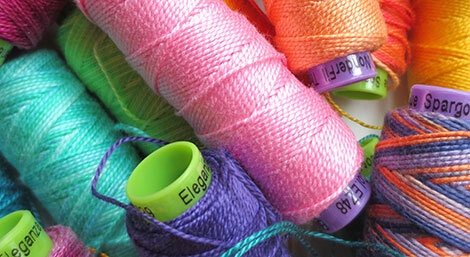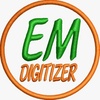In the realm of custom apparel and promotional products, the art of transforming a logo into an embroidery-ready format through digitizing is an essential step in ensuring the fidelity and impact of the final product. Logo digitizing specifically for embroidery threads is a nuanced process that bridges graphic design with the tactile world of thread and fabric. This article explores the intricacies of logo digitizing for embroidery, focusing on the considerations necessary to ensure that the transition from digital image to embroidered design is seamless and effective.
The Digitizing Process: An Overview
Embroidery Logo digitizing involves converting a logo or any graphic into a stitch file that an embroidery machine can read and execute. This process requires specialized software and a skilled digitizer who can interpret how best to translate the visual elements of the logo into stitches, considering the type of fabric, the size of the design, and the nature of the embroidery threads to be used.
Key Considerations for Embroidery Threads
When digitizing logos for embroidery, the choice of thread plays a significant role in the outcome. Here are some critical factors to consider:
1. Thread Type and Material
Polyester: Known for its strength, colorfastness, and durability, polyester is a versatile choice that works well for most embroidered logos, especially those subjected to harsh washing conditions or outdoor exposure.
Rayon: Although it offers a brilliant sheen and vibrant colors, rayon is less durable than polyester but is preferred for its aesthetic qualities, especially in fashion or luxury applications.
Specialty Threads: Metallic, glow-in-the-dark, or reflective threads can add unique effects to a logo but may require specific digitizing adjustments to accommodate their unique properties.
2. Thread Weight
Thread weight affects both the look and the feel of the embroidery digitizing logo. Heavier threads create a more pronounced and textured appearance but may not be suitable for intricate designs. Lighter threads, on the other hand, allow for more detail but may require more passes to achieve sufficient coverage. The digitizer must adjust the design accordingly to balance detail and thread weight.
3. Color Matching
Achieving an exact match to the original logo colors is crucial for brand consistency. Embroidery threads come in a wide range of colors, but slight variations can occur. A skilled digitizer knows how to select and blend thread colors to closely match the original design, taking into consideration how colors might look when stitched onto different fabric colors.
Digitizing Techniques for Different Threads
The digitizing approach varies significantly depending on the thread type and desired effect. For example:
- For thick threads reducing stitch density might be necessary to prevent the design from becoming too rigid.
- With delicate threads like metallic or silk, the digitizer might opt for shorter stitch lengths to prevent thread breakage.
- Incorporating effects, such as gradients or shadows, requires expert manipulation of stitch types, directions, and colors to achieve a three-dimensional look or smooth color transitions.
Challenges and Solutions
Digitizing logos for embroidery threads is not without its challenges. Small text, intricate details, and gradients can be difficult to replicate with stitches. Digitizers often have to creatively adapt the design, simplifying elements without compromising the logo's integrity. This might involve altering small text to make it legible or modifying intricate details to ensure they are recognizable when stitched.
Conclusion
Logo digitizing for embroidery threads is a specialized skill that combines artistry with technical knowledge. The choice of embroidery threads, along with expert digitizing techniques, plays a crucial role in bringing a logo to life on fabric. Whether for corporate apparel, promotional items, or personal projects, the meticulous process of logo digitizing ensures that the embroidered outcome faithfully represents the original design while maximizing the visual and tactile qualities of embroidery threads. As technology and materials evolve, so too will the possibilities for creative and impactful embroidered logos.


No comments yet